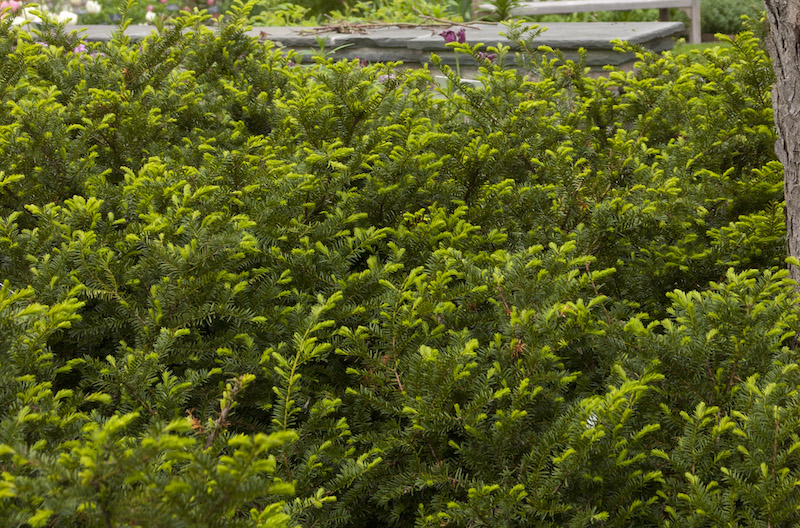One critical factor in encouraging a yew’s establishment in a landscape and ensuring it thrives every year is proper watering. Immediately following planting, regular watering is necessary for root recovery and growth. Once yews are solidly rooted in a site, only occasional watering during extended dry spells will be warranted. Moisture management is important; yews like good drainage and will suffer if they are overwatered or sit in waterlogged soil.

How To Tell If Yew Needs Watered
The best way to tell if a yew needs water is to examine the soil around the roots. As a needled plant, the soil will indicate much more than the leaves. Unlike broad-leaved plants, the yew will not show wilt or flagging when it is becoming thirsty. If the soil is dry to the touch a few inches below the surface or is cracking, water the yew. The needles on an underwatered yew will turn yellow and then brown, becoming brittle. Overwatering or wet, water-logged soil shows in the same way and is typically a more common problem with yews.

How Often To Water Yew
Following planting, check the soil around the yew roots daily; for the first week, plan to water the yew daily if there is no rain. Irrigate with about one-fourth to one-third of the size of the original yew container with each watering. From two weeks to three months after planting, time watering for every two to three days. At three months, decrease the frequency to once weekly until the plant is established. When rainfall is regular, there will be no need to water yews if the rain is heavy enough to penetrate the root zone.
Established yews may only need water during extended periods of hot, dry weather. If no rain has fallen for several weeks, it may be helpful to turn a hose on to a slow trickle over the root zone once or twice per week. In general, yews are more likely to suffer from being overwatered than underwatered. If in doubt, dig a small hole near the roots of the plant and feel the soil a few inches below the surface. Only water if the soil feels dry to the touch. A layer of organic mulch like shredded bark spread over the rootzone will further minimize irrigation needs.
Potted yews will typically require water more frequently than in-ground counterparts, so regular monitoring is key. Checking the soil to see if it feels dry to the touch about an inch below the surface is the best way to determine when to water the yew. If it feels dry, water the yew slowly and deeply until water drains out through the holes in the container. In hot weather, container yews may require multiple waterings weekly.
Best Time To Water Yew
The best time to water yews is early in the morning. This will minimize water loss from transpiration and ensure maximum uptake from the roots. For established plants, irrigation will only be necessary during dry spells when weather is hot. A thorough soaking in fall if rainfall has been inadequate can also be part of a winter preparation regimen.
How to Water Yew
Step 1 - Check the soil around the yew.
Use a hand trowel to dig a small hole near the root mass. If the soil a few inches below the surface still feels damp and the yew was not recently planted, there is no need to water the yew.
Step 2 - Prepare a hose.
The best way to irrigate a shrub like a yew is with a hose or dripline that will apply water in a trickle at the base. This will avoid water loss through evaporation and unnecessary foliage wetting that encourages disease.
Step 3 - Slowly water the yew, keeping loose track of how much water to apply.
Apply just enough water to encourage root growth. When watering newly planted yews, apply a volume of water that is about one-third the size of the plant’s container. For established plants, aim to apply one gallon of water slowly per inch of plant trunk width.
Yew Watering Tips
- Check the soil around the yews regularly
- Water slowly and deeply
- Avoid overwatering yews
- Be aware of desiccation in winter
 |
Author Angela Ryczkowski - Published 4-10-2023 |
